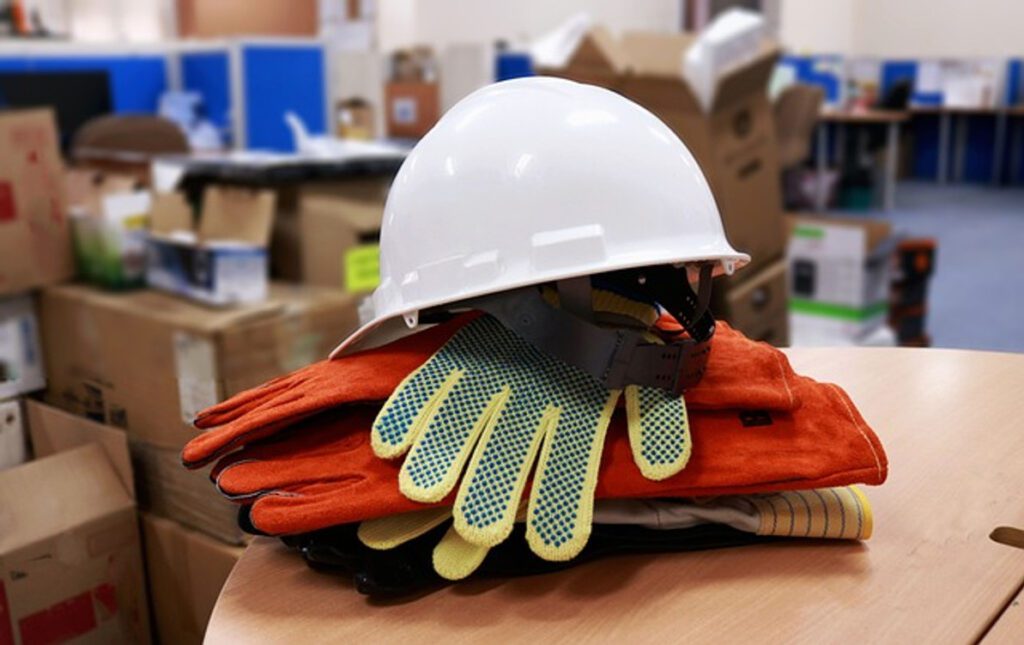Personal Protective Equipment (PPE) is a visible component of safety programs in many industrial and commercial environments. Despite its prevalence, workplace injuries and illnesses continue to occur, often because of persistent myths surrounding PPE’s function and application. Recognizing these misconceptions is a primary step toward building a more resilient safety culture and protecting employees from preventable harm.
PPE Is Not the First Line of Defense
A common belief is that providing workers with PPE is the first and most important step in hazard control. In reality, PPE is the last line of defense. A more effective safety strategy follows a specific hierarchy of controls designed to remove or reduce risks at their source. This approach prioritizes eliminating the hazard entirely, followed by substituting hazardous processes with safer ones. If those options are not feasible, engineering controls like machine guards or ventilation systems are used to isolate people from the hazard.
Administrative controls, such as changing work procedures or providing additional training, come next. PPE is only introduced when these other measures cannot adequately control the remaining risk. It protects the individual but does not remove the underlying danger.
One Size Does Not Fit All
Another prevalent myth is that any PPE is better than none, or that one type of equipment is suitable for everyone. Protective gear that does not fit correctly can be as dangerous as wearing no protection at all. Ill-fitting equipment may be uncomfortable, leading workers to remove it or adjust it in ways that compromise its effectiveness. For example, gloves that are too large can reduce dexterity and get caught in machinery, while safety glasses that leave gaps can allow particles or splashes to reach the eyes. Proper selection is also essential. Equipment must be chosen based on the specific hazards present.
- A hard hat protects from impacts but offers no defense against respiratory hazards.
- Standard safety glasses will not protect against chemical splashes like sealed goggles will.
- The material of a protective glove must be matched to the specific chemicals being handled.
Availability Does Not Guarantee Correct Use
Simply making PPE available to employees does not ensure they will wear it consistently or correctly. Workers may believe PPE is unnecessary for quick tasks, find it uncomfortable, or be unaware of the proper way to use it. A lack of compliance often points to a need for better training and a stronger safety culture, where expectations are clear and consistently reinforced. Consider a scenario where a company provides new, high-rated cut-resistant gloves but finds that laceration rates do not decrease.
An investigation reveals that employees are removing the gloves to handle small parts because the gloves reduce their tactile sensitivity. The solution involves sourcing better-fitting gloves and conducting training that explains the specific risks of even momentary exposure, leading to improved adherence and fewer injuries.
PPE Provides Resistance, Not Invincibility
Workers may sometimes develop a false sense of security, believing that wearing PPE makes them completely safe. However, all protective equipment has limitations and is designed to protect against specific hazards up to a certain level of exposure. It can degrade over time, become damaged during use, or fail if confronted with a hazard that exceeds its design specifications.
For example, a respirator cartridge has a finite service life, and a face shield may not withstand a high-velocity impact. Regular inspection and maintenance are necessary to ensure equipment remains effective.
- Inspect equipment for signs of wear, such as cracks, tears, or discoloration, before each use.
- Clean and store all gear according to the manufacturer’s instructions to prevent damage.
- Adhere to scheduled replacement dates for items like hard hats and respirator filters.
Improving PPE Adherence and Safety Outcomes
Moving past these common myths requires a comprehensive approach to safety management. It involves treating PPE as one part of a larger system that includes hazard analysis, engineering controls, and continuous employee training. When organizations commit to a holistic view of safety, they create a more reliable and protected work environment. Following PPE detection best practices is a valuable step toward strengthening safety protocols and ensuring that protective measures are consistently applied.


